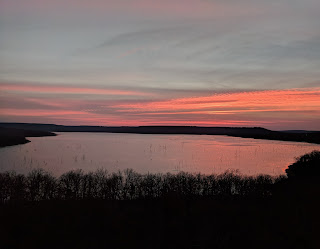Reading Notes: Beowulf (Part A)
For extra reading over this week and next week, I decided to do the Beowulf Unit. I actually read Beowulf my senior year of high school, but decided I wanted to reread it. This story was actually one of my favorites from that year. I think it was because it was one of the first stories that I went and did a lot of research over just for fun. I was curious about the history of it: how old it was, translations, and anything else surrounding this epic.
My favorite part from the first half is definitely The Wanderer's Song. This is where we first learn of the torments from the monster Grendel. I feel like this section is where we begin to feel excitement. From the descriptions of the monster, you can tell the story is about to take off and become an exciting adventure.
I really love how beautiful the language is in this translation. The descriptions and imagery really help the reader feel like they are a part of the story. You can see the stormy sea crashing waves into their ships. You can feel the wind blowing hard as they ride over the choppy water. If I decided to write a story based off of something from this epic, I want to try to live up to the imagery found in the original.
My favorite part from the first half is definitely The Wanderer's Song. This is where we first learn of the torments from the monster Grendel. I feel like this section is where we begin to feel excitement. From the descriptions of the monster, you can tell the story is about to take off and become an exciting adventure.
I really love how beautiful the language is in this translation. The descriptions and imagery really help the reader feel like they are a part of the story. You can see the stormy sea crashing waves into their ships. You can feel the wind blowing hard as they ride over the choppy water. If I decided to write a story based off of something from this epic, I want to try to live up to the imagery found in the original.
Image: Viking
The translation I read was from The Story of Beowulf by Strafford Riggs with illustrations by Henry Pitz (1933).




Comments
Post a Comment